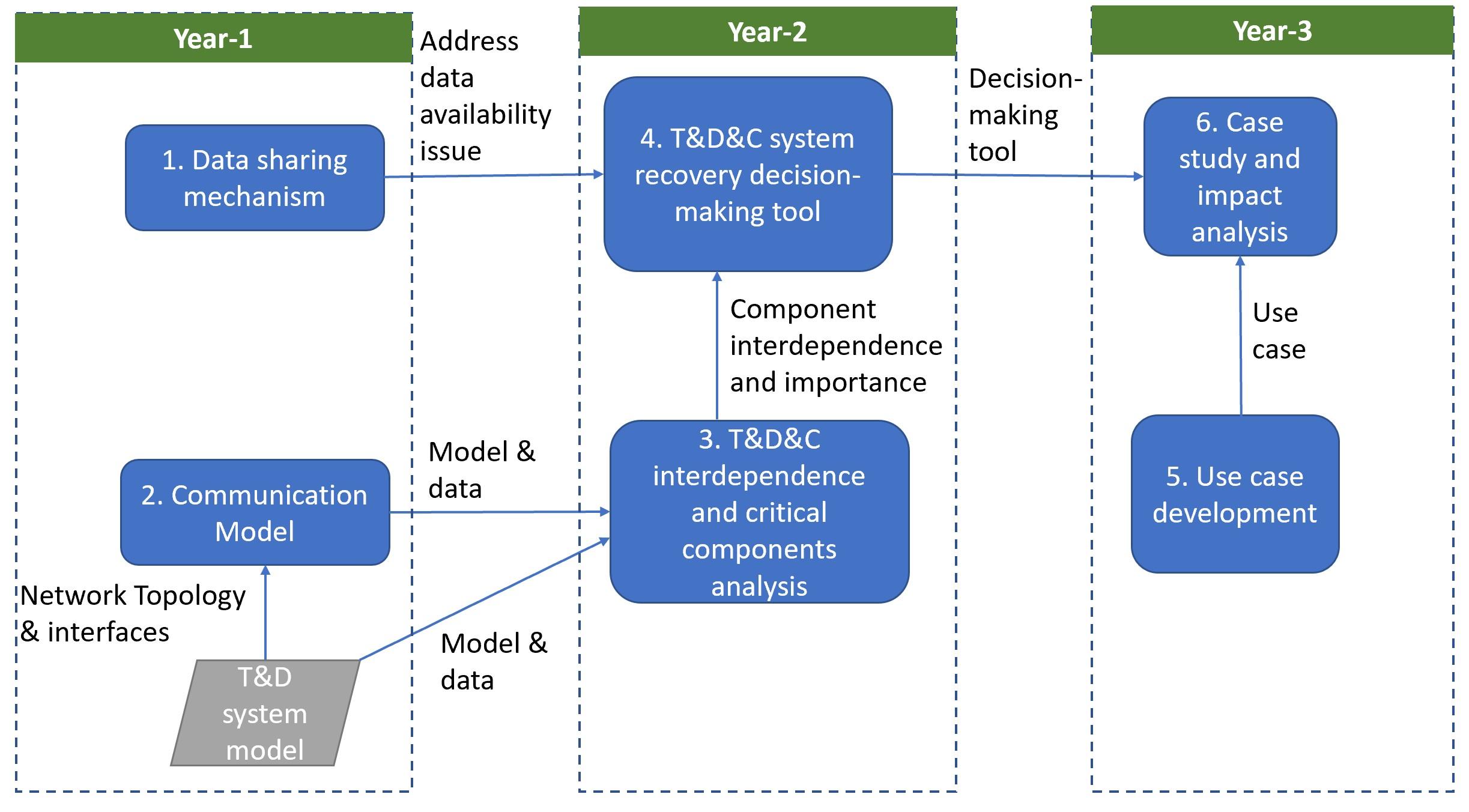Technical Approach
There are three main challenges for developing the coordinated TDC system restoration approach to speed up the entire system restoration:
- Lack of a mechanism for sharing necessary information among transmission operators and distribution utilities to coordinate the restoration plans both at the planning and actual implementation stages;
- Limited knowledge and lack of established models for the communication systems used for power system control and operation;
- Lack of support tools for providing operators and engineers coordinated restoration procedures which are adaptive to evolving system conditions.
The PNNL team has developed a mechanism for sharing necessary information between transmission and distribution entities for coordinating restoration plans at both the planning and the implementation stages. The team will continue to develop a synthetic communication model with realistic features and coupled with the T&D systems, and algorithms for identifying the interdependence and the critical parts in T&D&C systems). The team will provide a tool for generating time-sequential, coordinated restoration plans. The work plan is shown in Figure 2.

The overall procedure of our work (platform) is shown in Figure 3. We developed a distributed co-optimization approach for T&D&C system restoration decision-making, which is further illustrated in Figure 4. Furthermore, there is a notable gap in verifying the feasibility and impact of the restoration decisions with real-time and/or forecasted information, which could deteriorate the restoration process or even cause system stability issues that leads to outages. To address this issue, we bridged the gap between restoration planning and operation by employing the interactive co-simulation tool to perform feasibility and stability check of T&D system restoration plans. The feasibility and impact analysis results are shown in the <Recent Progress> session.

The sequence of implementing the co-optimization for T&D blackstart is as follows:
- Distribution system provide their capabilities
- Transmission find optimal energization sequence, including DER as BS unit
- Transmission and distribution systems co-optimize to find a feasible operating condition for the given sequence

We developed a framework and Interactive T-D Dynamic Co-simulation Algorithm to switch between dynamic simulation (DS) and power flow (PF) modes to simulate a series of sequential restoration events over a longer time horizon (from a few hours to a few days) in an efficient manner. As shown in Figure 5, PF mode is utilized to update long-term or slow variations such as generators ramp up/down, daily load profile etc., whereas dynamic events at faster time scale are simulated in DS mode such as load pickup, generation energization or fault. Switching from PF to DS mode is driven by the restoration decision-making which will be an input from the optimization module. Once DS-PF switching is complete, required slow updates are performed in PF mode and then we again switch to DS mode to simulate next restoration decision. This process continues to simulate multiple dynamic restoration event sequentially
